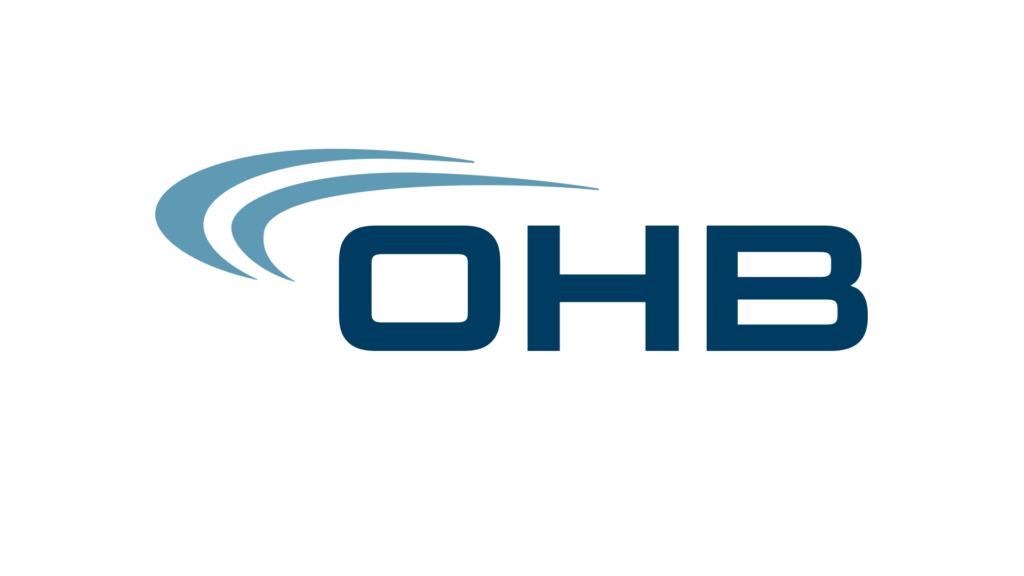Workplaces today face the challenge of maintaining high morale and strong interpersonal connections. One innovative solution gaining traction is the implementation of company sports programs. These initiatives not only enhance employee engagement but also foster a sense of unity and teamwork. This guide delves into the significance of company sports, providing a roadmap for organizations to harness their full potential and transform their workplace culture.
What Are Company Sports and Why Do They Matter?
Company sports are organized athletic activities within businesses, designed to improve workplace atmosphere, boost employee engagement, and promote physical and mental wellbeing. Unlike traditional sports clubs, company sports focus primarily on building connections between colleagues while providing health benefits. These programs range from casual weekly games to competitive leagues and tournaments representing the organization.
The concept of company sports isn’t new—it dates back to the late 19th century when organizations like Lancashire and Yorkshire Railway formed teams that eventually evolved into professional clubs like Manchester United. Today, company sports have evolved beyond traditional team sports to include a diverse range of activities catering to various interests and abilities.
Company sports matter because they address multiple workplace challenges simultaneously. They combat sedentary work habits, reduce stress, break down silos between departments, and create organic opportunities for relationship building. In an era where employee engagement and retention are critical business concerns, company sports provide a cost-effective strategy for cultivating workplace culture.
Company sports transform colleagues into teammates, creating bonds that strengthen the entire organization from the inside out.
Research consistently shows that organizations with active company sports programs report higher employee satisfaction, improved teamwork, reduced absenteeism, and enhanced productivity. These benefits extend beyond the playing field and into everyday workplace interactions, making company sports a strategic investment rather than just a recreational perk.
Types of Company Sports Programs

Company sports initiatives come in various forms, each offering unique benefits and catering to different organizational needs:
Internal Teams and Leagues
Many organizations create internal leagues where departments compete against each other in various sports. This approach works particularly well for larger companies with enough employees to form multiple teams. Internal leagues foster healthy competition while strengthening departmental identity and cross-departmental relationships.
Popular formats include:
- Department vs. department tournaments
- Location-based teams (for companies with multiple offices)
- Mixed teams that deliberately combine employees from different departments
External Corporate Leagues
Joining external corporate leagues allows companies to compete against other organizations in their city or region. These leagues typically offer structured seasons with regular games and playoffs, providing employees with consistent opportunities to bond outside the office.
Benefits of external leagues include:
- Exposure to other companies and potential networking opportunities
- Professional organization and administration
- Variety of competition levels from recreational to competitive
One-Time Events and Field Days
For companies unable to commit to regular leagues, one-time sporting events offer an accessible alternative. Company field days, charity tournaments, or annual sports challenges provide concentrated team-building experiences without requiring ongoing time commitments.
Virtual and Hybrid Options
The rise of remote work has spurred innovation in company sports programs. Virtual fitness challenges, step competitions, and online yoga sessions allow distributed teams to participate in shared physical activities regardless of location.
Benefits of Company Sports for Organizations
The advantages of implementing company sports programs extend far beyond physical fitness, delivering measurable impacts across multiple dimensions of organizational health:
Enhanced Team Cohesion and Communication
When employees participate in sports together, they develop communication patterns that transfer back to the workplace. Learning to coordinate on a volleyball court or soccer field creates neural pathways that improve collaboration on work projects. Teams that play together develop a shorthand understanding that enhances efficiency and reduces misunderstandings.
Improved Employee Health and Reduced Healthcare Costs
Regular physical activity through company sports programs leads to healthier employees, which translates to tangible business benefits:
| Health Benefit | Business Impact |
|---|---|
| Reduced stress levels | Lower burnout and turnover |
| Improved cardiovascular health | Fewer sick days |
| Better sleep quality | Enhanced cognitive performance |
| Stronger immune function | Decreased healthcare costs |
Studies show that unhealthy employees cost US employers approximately $575 billion annually. Company sports programs represent a proactive investment in reducing these costs while simultaneously boosting morale and productivity.
Breaking Down Departmental Silos
One of the most valuable aspects of company sports is their ability to connect employees who might otherwise rarely interact. When the marketing team and the engineering department face off in a friendly basketball game, they build relationships that facilitate future collaboration.
Sports create natural bridges between departments that formal team-building exercises often fail to achieve.
Talent Attraction and Retention
In today’s competitive job market, company culture can be a deciding factor for prospective employees. Organizations that offer vibrant company sports programs signal their commitment to employee wellbeing and work-life balance. Additionally, the bonds formed through sports participation increase employee loyalty and reduce turnover.
How to Implement a Successful Company Sports Program
Creating an effective company sports initiative requires thoughtful planning and execution. Here’s a step-by-step approach to launching a program that delivers maximum impact:
1. Assess Employee Interest and Capabilities
Before investing in equipment or league fees, survey your employees to determine:
- Which sports or activities generate the most interest
- Preferred time commitments (weekly games vs. occasional events)
- Existing skill levels and competitive preferences
- Any physical limitations or accessibility concerns
This information will help you design a program that maximizes participation and inclusivity.
2. Establish Clear Goals and Metrics
Define what success looks like for your company sports program. Are you primarily focused on improving employee health, enhancing team cohesion, or reducing stress? Establishing clear objectives will guide your implementation and help you measure effectiveness.
Common metrics to track include:
- Participation rates across departments
- Employee satisfaction surveys
- Team performance metrics before and after program implementation
- Health-related metrics like reduced absenteeism
3. Secure Resources and Support
Successful company sports programs require both material and organizational support:
- Budget allocation: Consider costs for equipment, league fees, uniforms, and potential venue rentals
- Executive sponsorship: Ensure leadership visibly supports and participates in the program
- Dedicated coordinators: Assign responsibility for organizing teams and managing logistics
- Appropriate facilities: Identify accessible venues for practices and games
4. Create Inclusive Structures
To maximize the cultural benefits of company sports, design your program to be welcoming to employees of all abilities and interests:
- Offer multiple sport options with varying physical demands
- Create both competitive and recreational divisions
- Provide adaptive equipment or modified rules when needed
- Consider family-friendly events that include employees’ households
Real-World Success Stories
Organizations across industries have leveraged company sports to transform their workplace cultures:
Tech Giant’s Volleyball Revolution
A leading technology company implemented a volleyball league that initially attracted just 20 employees. After three years, participation grew to over 200 employees across 30 teams. HR reported a 22% reduction in turnover among participants compared to non-participants, and cross-departmental collaboration increased measurably on subsequent projects.
Healthcare Provider’s Step Challenge
A regional healthcare network launched a step challenge that engaged 85% of their 3,000 employees. Teams competed to accumulate the most steps over a three-month period, with weekly leaderboards and monthly prizes. The initiative resulted in an average 4,000 additional daily steps per employee and a 15% reduction in reported stress levels.
In the modern workplace landscape, innovative platforms are emerging to facilitate company sports programs. Neroia, for example, offers a social employee benefits platform that enhances workplace culture through AI-driven recommendations for small-group activities including sports and wellness events. By minimizing planning friction and encouraging authentic interactions between coworkers, such platforms make implementing company sports programs more accessible and effective.
Overcoming Common Challenges

While the benefits of company sports are substantial, organizations often encounter obstacles when implementing these programs:
Scheduling Conflicts
Finding times that work for employees with varying schedules can be challenging. Solutions include:
- Offering multiple time slots for the same activity
- Creating flexible participation options
- Using technology to coordinate availability
- Implementing asynchronous challenges that don’t require simultaneous participation
Varying Fitness and Skill Levels
Disparities in athletic ability can discourage participation if not properly addressed. Effective approaches include:
- Creating tiered competition levels (recreational, intermediate, competitive)
- Offering skill-building clinics for beginners
- Implementing handicap systems or modified rules
- Focusing on inclusive activities that minimize skill barriers
Liability and Safety Concerns
To mitigate potential risks:
- Consult with legal advisors about appropriate waivers and insurance
- Establish clear safety protocols and emergency procedures
- Provide proper equipment and training
- Consider partnering with professional organizations that manage liability
The Future of Company Sports
The landscape of company sports continues to evolve, with several emerging trends shaping its future:
Technology Integration
Digital platforms are transforming how company sports programs operate. Mobile apps track participation, facilitate team communication, and gamify fitness challenges. Wearable technology enables friendly competition through data sharing, while virtual reality creates new possibilities for remote team activities.
Personalization and Inclusivity
Future company sports programs will increasingly cater to individual preferences and needs. AI-driven platforms like Neroia are leading this evolution by recommending activities based on personal interests and schedules, making it easier for employees to find sports and wellness activities that resonate with them personally while connecting with colleagues who share similar interests.
Holistic Wellness Integration
Company sports are increasingly being integrated into comprehensive wellness programs that address physical, mental, and social wellbeing. Rather than existing as standalone recreational activities, sports are becoming part of strategic initiatives to create healthier, more connected workplaces.
| Traditional Company Sports | Evolving Company Sports |
|---|---|
| Focus on competition | Balance of competition and connection |
| Limited to physical location | Hybrid and virtual options |
| Dominated by traditional team sports | Diverse activities including mindfulness and individual sports |
| Separate from work culture | Integrated into workplace wellness strategy |
Measuring ROI of Company Sports Programs
To justify investment in company sports, organizations should track both quantitative and qualitative outcomes:
Quantitative Metrics
- Reduced healthcare costs and absenteeism
- Employee retention rates among participants vs. non-participants
- Productivity measurements before and after implementation
- Cross-departmental collaboration statistics
Qualitative Assessments
- Employee satisfaction surveys
- Team cohesion evaluations
- Manager observations of improved collaboration
- Participant testimonials and feedback
Conclusion: Beyond Recreation to Transformation
Company sports represent far more than just recreational activities—they’re strategic investments in organizational health and culture. By fostering authentic connections between colleagues, promoting physical and mental wellbeing, and breaking down barriers to collaboration, these programs deliver measurable business value while enriching employees’ work experience.
As workplaces continue to evolve, particularly with the rise of remote and hybrid models, innovative approaches to company sports will become increasingly important. Platforms like Neroia are at the forefront of this evolution, using technology to facilitate meaningful connections through shared activities tailored to individual interests and schedules. By minimizing planning friction and encouraging organic interactions, these solutions make it easier than ever for organizations to harness the power of company sports.
Whether you’re leading a small startup or a global enterprise, implementing a thoughtful company sports program can transform your workplace culture, boost employee engagement, and ultimately drive business success. The playing field is more than just a place for recreation—it’s where stronger teams and organizations are built.
When colleagues become teammates, the entire organization wins—both on and off the field.




